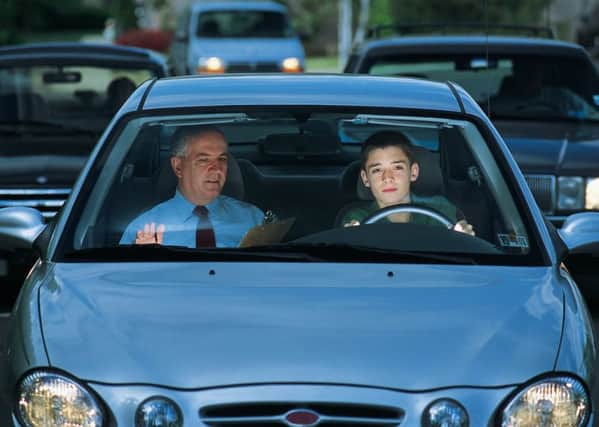Alastair Ross: Seize the chance to save young drivers


Road Safety Scotland says that an average of 54 accidents a week involve a young driver aged between 17 and 25. They account for ten per cent of all licence holders, yet young drivers are involved in one in five accidents. That’s an average of one death and more than 70 people injured every week.
UK Department for Transport data shows that young drivers are at a much higher risk of being killed or seriously injured on the road when they drive at night. The level of accidents at night is vastly disproportionate to the number of drivers on the road and the mileage they have clocked up.
Advertisement
Hide AdAdvertisement
Hide AdIt’s worst at weekends, when young drivers can be as much as 20 times more likely to be killed or seriously injured. But even throughout the week, young drivers cause a vastly disproportionate number of accidents between midnight and 4am.
So what’s the answer? Scotland on Sunday has highlighted the TRL report commissioned by Transport Scotland, which found off-road driving courses aimed at under-17s could put them at greater risk of accidents (News, 13 May).
Off-road experience is no equivalent to qualified on-road instruction. The report author, psychologist Dr Neale Kinnear, said: “In the absence of controlled evaluation, the simplest way to control the risk of harm would be to introduce a minimum learner period.”
Northern Ireland is doing just that in a new Graduated Driver Licensing (GDL) scheme. Under the Road Traffic (Amendment) Act passed at Stormont in 2016 young drivers there may still send off a driving test application form on the day they turn 17. However, under the new law they will have to wait and practise for another six months until the can sit their test.
This Minimum Mandatory Learning Period will introduce regulations for a learner driver programme including a compulsory log of training which needs to be signed off by an Approved Driving Instructor before a student can sit their test.
It will also restrict when and how many passengers a newly qualified driver can carry. Between 11pm and 6am drivers up to the age of 24 who have fewer than six months on their licence will be prohibited from carrying more than one passenger aged between 14 and 20 years old. There will be exemptions for family members and other specific circumstances, but the ban will tackle the problem of young inexperienced drivers travelling too fast at night with a car full of their peers on board egging them on.
The ABI would go further still. We propose a 12-month minimum learning period but we’d want young people to start learning earlier, at 16 and a half. We also want to see intensive driver training courses banned.
Improving young driver safety and minimising the risks they pose is also the most sustainable way of tackling the high cost of insurance they face.
Advertisement
Hide AdAdvertisement
Hide AdThere is political support for GDL and maybe a window of opportunity too. Prime Minister Theresa May asked officials to look into GDL after Labour MP Jenny Chapman raised it at Prime Minister’s Questions.
UK Transport Minister Jesse Norman is looking at the Northern Ireland scheme as a pilot to gather evidence on the potential for GDL in Great Britain.
Scottish Transport Minister Humza Yousaf would like to see DfT take GDL forward for the UK or else see those powers devolved to the Scottish Parliament.
In a Westminster Parliament divided by Brexit, a minority government might just find the cross-party support for a new law to protect our young drivers – and the rest of us.
Alastair Ross is Head of Public Policy for the Association of British Insurers